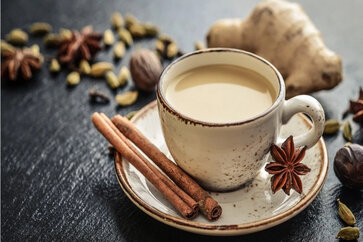How to Lose Weight & Belly Fat With Ayurveda at Home
Looking to lose weight naturally? Embrace the Ayurvedic lifestyle, which combines a tailored Ayurvedic diet and traditional Ayurvedic medicine to support your weight loss journey. Ayurveda offers a holistic and natural approach to achieving and maintaining a healthy weight, rooted in ancient Indian wisdom.
Ayurveda is celebrated for its comprehensive approach to balancing the needs of both body and spirit. It views the individual as an intricate blend of material and spiritual energies, where achieving harmony between these aspects is essential for overall well-being. Any imbalance can be corrected through Ayurveda’s methods, restoring natural equilibrium and enhancing health.
In this article, you’ll discover how to leverage Ayurvedic principles to lose weight effectively. We’ll explore a nutritional plan that considers your unique physical and emotional characteristics, helping you choose the right foods and practices to promote weight loss and maintain balance. Learn how Ayurveda’s personalized approach can lead to sustainable weight management and a more harmonious lifestyle.
1. Try to Live a Healthy Lifestyle
Adopting an Ayurvedic approach to living a healthy lifestyle involves creating balance across all aspects of life—body, mind, and spirit. Ayurveda emphasizes that health is not merely the absence of disease but a state of complete harmony. Here’s a holistic approach based on Ayurvedic principles to help you maintain a balanced and healthy lifestyle:
Key Components of an Ayurvedic Lifestyle
1. Balance Body, Mind, and Spirit: Ayurveda views health as a balance between these three elements. Disruptions in any of these areas can lead to illness or weight gain. Strive for equilibrium through mindful practices.
2. Mindful Eating: Your diet should align with your dosha (body type) to ensure that your body gets the right kind of nourishment. Eating with awareness and gratitude can enhance digestion and overall well-being.
3. Routine: Establishing a consistent daily routine (Dinacharya) helps maintain balance. This includes:
- Waking Up Early: Aim to wake up before sunrise to align with natural rhythms.
- Regular Meals: Eat meals at the same time each day to support digestive health.
- Consistent Sleep Schedule: Go to bed at the same time each night and ensure adequate rest.
4. Stress Management: Chronic stress can disrupt your dosha balance and contribute to weight gain. Incorporate practices like meditation, deep breathing exercises, and yoga to manage stress effectively.
5. Physical Activity: Regular exercise is essential for maintaining physical health and balancing doshas. Choose activities that align with your dosha:
- Vata: Gentle exercises like walking or yoga.
- Pitta: Moderate exercises like swimming or biking.
- Kapha: More vigorous activities like running or high-intensity workouts.
6. Self-Care Practices: Ayurveda recommends various self-care practices to support well-being:
- Abhyanga: Self-massage with warm oil to nourish the skin and calm the nervous system.
- Dry Brushing: To stimulate circulation and remove dead skin cells.
- Cleansing Routines: Periodic detoxes or cleanses to remove toxins from the body.
7. Mindfulness and Meditation: Regular meditation helps center the mind, reduce stress, and improve mental clarity. Aim for a daily practice, even if it’s just for a few minutes.
8. Healthy Relationships: Surround yourself with positive influences and maintain harmonious relationships. Stress from negative relationships can impact your overall health.
9. Environment: Create a living space that supports your well-being. A clean, organized environment can promote mental clarity and a sense of peace.
10. Personal Growth: Engage in activities that foster personal development and joy. This contributes to a fulfilling and balanced life.
Integrating Ayurveda into Daily Life
- Morning Routine: Start your day with a glass of warm water, followed by a light exercise or stretching. Practice meditation or mindfulness to set a positive tone for the day.
- Meal Preparation: Prepare meals with seasonal and dosha-appropriate ingredients. Eat mindfully and avoid distractions like television or smartphones during meals.
- Evening Routine: Wind down with calming activities such as reading, gentle yoga, or a warm bath. Avoid stimulants like caffeine or heavy meals before bedtime.
By integrating these Ayurvedic principles into your daily routine, you can achieve a holistic balance that supports not only weight management but overall health and well-being.
This lifestyle approach fosters a deep connection between mind, body, and spirit, leading to a more harmonious and fulfilling life.
2. Eat Healthy Food
To manage weight effectively according to Ayurvedic principles, it’s important to understand how this ancient system views the relationship between food and body balance.
Ayurveda identifies three primary doshas—Vata, Pitta, and Kapha—each representing different physical and psychological traits. Here’s a simplified approach based on Ayurveda to help achieve and maintain a healthy weight:
Understanding Doshas:
1. Vata Dosha: Characterized by qualities like dryness, lightness, and coolness. Individuals with a dominant Vata dosha often benefit from foods that are warm, moist, and grounding.
2. Pitta Dosha: Marked by heat, intensity, and fluidity. People with a Pitta dosha usually do well with cooling, soothing foods that help balance their natural heat.
3. Kapha Dosha: Known for its heaviness, coldness, and stability. Those with a predominant Kapha dosha should focus on foods that are light, warm, and stimulating to counterbalance their natural tendencies.
Dietary Recommendations for Each Dosha:
- For Vata Dosha: Opt for warm, nourishing foods such as soups, stews, and whole grains. Include healthy fats like ghee or olive oil, and enjoy sweet and spicy flavors to help stabilize the dryness and lightness associated with Vata.
- For Pitta Dosha: Choose cooling, hydrating foods like cucumber, mint, and dairy products. Emphasize sweet, bitter, and astringent tastes while avoiding excessively spicy or acidic foods to soothe the Pitta heat.
- For Kapha Dosha: Favor light, dry, and warming foods such as leafy greens, spices, and legumes. Incorporate stimulating flavors like bitter and pungent, and avoid heavy, oily, and sweet foods that can aggravate Kapha.
General Tips:
1. Mindful Eating: Pay attention to your body’s hunger and fullness signals. Eating slowly and mindfully helps ensure that you’re not overeating and allows you to better tune into what foods suit your dosha.
2. Balanced Meals: Aim to create meals that include a balance of flavors and nutrients. Ayurveda emphasizes harmony in the diet to support overall well-being.
3. Seasonal Adjustments: Adjust your diet according to the season to maintain dosha balance. For instance, eat lighter foods in the summer and richer foods in the winter.
By tailoring your diet to your dosha, Ayurveda suggests you can achieve a more balanced and harmonious state, which can help with weight management and overall health.
3. Eat According to Your Doshas
In Ayurveda, understanding your dosha—Vata, Pitta, or Kapha—helps tailor your diet and lifestyle to maintain balance and enhance overall well-being. Each dosha has distinct characteristics and dietary needs.
1. Vata Dosha
For someone with a predominance of the Vata dosha, the focus is on grounding and nourishing foods that counterbalance its inherent qualities. Here’s how you can eat and live in harmony with the Vata dosha:
Characteristics of Vata Dosha
- Physical Constitution: Fine and thin build.
- Appetite: Irregular, fluctuating between very hungry and barely hungry.
- Sleep Patterns: Shallow sleep and potential insomnia.
- Mental Traits: Creative, imaginative, and energetic but with a fragile memory and tendency to overthink.
- Digestive Health: Irregular bowel movements and tendency towards constipation.
Dietary Recommendations for Vata Dosha
1. Warm, Moist, and Nourishing Foods:
- Grains: Opt for cooked grains like oatmeal, rice, and quinoa which are warming and easy to digest.
- Vegetables: Choose cooked vegetables like carrots, sweet potatoes, and squash. Avoid raw salads and cold foods which can aggravate Vata.
2. Healthy Fats:
- Include moderate amounts of healthy fats such as ghee (clarified butter), olive oil, and avocados. These help provide the lubrication and warmth Vata types need.
3. Sweet, Sour, and Salty Tastes:
- Emphasize sweet, sour, and slightly salty flavors which help balance Vata’s dry and light qualities. Fruits like bananas, apples, and berries, along with citrus fruits, can be beneficial.
4. Hydrating Foods and Drinks:
- Drink warm herbal teas and soups to stay hydrated and to soothe Vata’s dryness. Avoid excessive caffeine and alcohol as they can be dehydrating.
5. Spices:
- Use spices that have warming properties such as ginger, cinnamon, cardamom, and cumin. These spices help stimulate digestion and provide warmth.
6. Regular, Balanced Meals:
- Aim to eat at regular intervals and avoid skipping meals. This helps stabilize Vata’s irregular appetite and supports consistent digestion.
7. Avoid Cold and Dry Foods:
- Steer clear of foods that are cold, dry, or rough, such as crackers, raw vegetables, and cold salads. These can increase Vata’s imbalance.
Lifestyle Tips for Vata Dosha
1. Routine and Stability:
- Establish a consistent daily routine. Going to bed and waking up at the same time each day helps regulate Vata’s irregular patterns.
2. Warm Environment:
- Keep your living space warm and cozy. Avoid drafts and cold environments that can aggravate Vata’s cold nature.
3. Gentle Exercise:
- Engage in gentle, grounding exercises like yoga, walking, or tai chi. Avoid overly strenuous workouts which can increase Vata’s agitation.
4. Stress Management:
- Practice relaxation techniques such as meditation, deep breathing, or journaling to calm the mind and reduce overthinking.
5. Adequate Rest:
- Prioritize good quality sleep and create a calming bedtime routine. A warm bath or reading a book before bed can help soothe Vata’s restless nature.
6. Self-Care:
- Regular self-massage with warm oil (Abhyanga) can be soothing and helps balance Vata’s dryness.
By tailoring your diet and lifestyle to address the specific needs of the Vata dosha, you can help maintain balance and improve overall health and well-being.
Embracing these practices can lead to a more harmonious and stable state, reducing symptoms associated with an imbalance of Vata.
2. Pitta Dosha
3. Kapha Dosha
For individuals with a predominance of the Kapha dosha, the focus is on counterbalancing the qualities of heaviness, coldness, and stability that characterize this dosha.
Kapha types have a robust physique and a calm demeanor but may struggle with weight gain and slow digestion. Here’s how to tailor your diet and lifestyle to maintain balance for the Kapha dosha:
Characteristics of Kapha Dosha
- Physical Constitution: Robust and wide body build.
- Personality: Calm, tolerant, and forgiving. Less prone to anger but can be complacent and possessive.
- Skin: Greasy and soft.
- Sleep Patterns: Deep and heavy sleep.
- Appetite: Slow and infrequent hunger; digestion tends to be slow.
- Weight: Prone to gaining weight easily.
Dietary Recommendations for Kapha Dosha
1.Light and Warming Foods:
- Grains: Choose lighter grains such as barley and millet. Avoid heavy grains like wheat and rice that can increase Kapha’s heaviness.
- Vegetables: Focus on light, warming vegetables such as leafy greens, peppers, and cruciferous vegetables like broccoli and cauliflower.
2. Spicy and Bitter Flavors:
- Incorporate spicy and bitter flavors to stimulate digestion and counterbalance Kapha’s tendency toward heaviness. Spices like ginger, black pepper, turmeric, and cayenne are beneficial.
3. Healthy Fats:
- Use small amounts of healthy fats like olive oil or flaxseed oil. Avoid excessive oils and fatty foods which can aggravate Kapha.
4. Hydration:
- Drink warm or hot beverages, including herbal teas like ginger or cinnamon tea. Limit excessive water intake during meals, as it can slow digestion.
5. Moderate Portions:
- Eat smaller, more frequent meals to support digestion and prevent overeating. Focus on portion control to manage weight and balance Kapha’s tendency to gain weight.
6. Avoid Heavy and Sweet Foods:
- Minimize intake of heavy, oily, and excessively sweet foods. These can increase Kapha’s natural qualities of heaviness and stagnation.
Lifestyle Tips for Kapha Dosha
1. Active Lifestyle:
- Engage in regular, stimulating physical activity to combat Kapha’s tendency towards inactivity and weight gain. Activities such as brisk walking, jogging, or aerobic exercises are ideal.
2. Warm and Invigorating Environment:
- Maintain a warm and energetic environment. Avoid staying in cold or damp environments which can increase Kapha’s heaviness.
3. Mental Stimulation:
- Stay mentally active and engaged. Pursue activities that challenge your mind and keep you motivated, such as learning new skills or hobbies.
4. Routine and Discipline:
- Develop a disciplined daily routine to counterbalance Kapha’s tendency toward complacency. Regular sleep and meal schedules help maintain balance.
5. Stress Management:
- While Kapha types are generally calm, regular stress management practices such as yoga or meditation can help maintain mental and emotional balance.
6. Self-Care Practices:
- Consider incorporating invigorating self-care practices like dry brushing or massage with stimulating oils. These can help invigorate the body and improve circulation.
By aligning your diet and lifestyle with the needs of the Kapha dosha, you can help manage and balance the inherent qualities of heaviness and coldness.
This approach supports overall health, maintains a healthy weight, and fosters a dynamic and active lifestyle.
5. Always Eat 6 Flavors of Food
In the previous point, we talked about the flavors recommended according to your dosha. By this, we mean that in this alimentary conception, great importance is given to the 6 flavors: sweet, sour, salty, spicy, bitter, and astringent.
To achieve a nutritional balance it is important that your day has all 6 flavors because it is considered that the union of all reduces the desire to take sweets, reduces the feeling of hunger, and gets the metabolism to work properly.
According to Ayurveda, the cravings or gluttony is due to the fact that the 6 flavors in the diet are not contained and, then, your body asks you to satisfy its need.
The anxiety to eat or the desire for sweets just happens because there is a mismatch inside, so by incorporating the 6 flavors every day you will balance your body and lose weight.
- Acid: Foods such as tomatoes, grapes, vinegar, lemon, yogurt, raspberries, etc.
- Bitter: The lettuce, the spinach, the aborigines, or the saffron.
- Astringent: Cauliflower, potatoes, pears, apples, and lentils.
- Sweet: Rice, melon, coconut, banana, watermelon, honey, bread, fennel, or almonds.
- Spicy: Garlic, onion, basil, ginger, bay leaf, rosemary, thyme, cloves, mustard, or radishes.
- Salty: Zinc, magnesium, and salt.
6. Regular Practice of Yoga and Meditation
Ayurveda emphasizes achieving harmony between the body and mind, making physical activity, especially yoga, an integral part of this holistic approach.
Yoga is designed to promote overall balance and well-being, aligning perfectly with Ayurvedic principles. It helps in harmonizing the physical body with mental and spiritual aspects, fostering a sense of unity and calm.
Yoga: Incorporating yoga into your routine can greatly enhance your weight loss efforts by improving flexibility, strength, and circulation.
It also aids in the detoxification process and helps manage stress, which can contribute to weight gain. Regular yoga practice not only supports physical health but also encourages mental clarity and emotional stability.
Meditation: Meditation plays a crucial role in Ayurveda by helping to reduce stress and cultivate mindfulness. Research shows that mindfulness-based interventions can effectively reduce obesity-related eating behaviors by promoting a more conscious approach to eating.
Meditation helps you connect with your inner self, manage emotional eating, and foster a more balanced relationship with food.
By integrating meditation into your daily routine, you can enjoy numerous benefits:
- Stress Reduction: Meditation helps lower stress levels, which can reduce emotional eating and support weight management.
- Mindful Eating: Developing mindfulness through meditation enhances your awareness of hunger cues and food choices, leading to healthier eating habits.
- Mental Clarity: It promotes a calm and focused mind, making it easier to stick to dietary and lifestyle changes.
Embracing both yoga and meditation as part of your Ayurvedic journey helps create a comprehensive approach to weight loss and overall health.
These practices not only support physical fitness but also foster mental and emotional well-being, contributing to a more balanced and fulfilling life.
To lose weight and belly fat with Ayurveda at home, focus on balancing your dosha through a tailored diet, mindful eating, regular exercise, and stress management practices, all while embracing a holistic lifestyle that nurtures both body and mind.



























Thanks for this article for the tips for weight loss. I am gaining weight every month and I can’t help to reduce it. I will try this tips for my daily life. I hope it helps.
When it comes to weight loss and reducing belly fat using Ayurveda at home, there are several principles and practices you must follow.